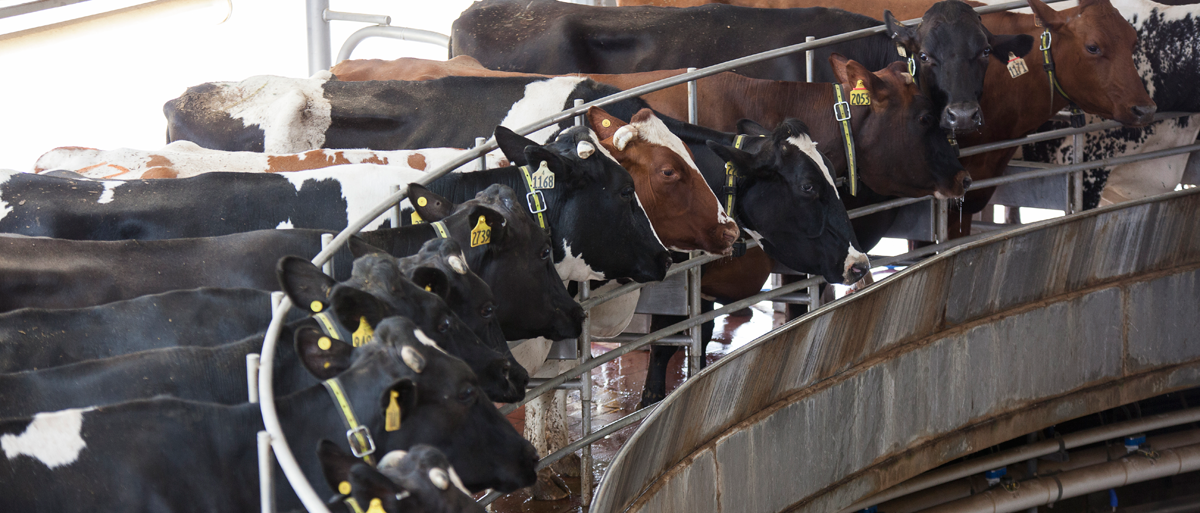We all know milk comes from cows. Some of us even think chocolate milk comes from brown cows. All jokes aside, how does the milk get from cows to our table?
“That’s easy!” you say. “You squeeze the udder and milk comes out!” While this is true, the days of dairy farmers pulling up a stool to milk cows one at a time are long behind us. This was a tedious, yet rewarding task, and dairy farmers have new technology that allows them to feed our growing world!
These days, more efficient machines and sometimes robots provide relief to the hands of farmers around the country. Dairy farmers use different milking equipment depending on how many cows they milk, how many times a day they milk, the cost of machinery and their personal preference. It’s not just the equipment that has changed either; the way dairies are designed has also changed since the days when each farmer had just one cow.
On a dairy farm, the place where the milking magic happens is called a “parlor.” Milking parlors, like cows, come in all different shapes and sizes. Farmers put a lot of thought and effort into the design of this space, and it’s not so much about feng shui as it is about functionality. Parlors are designed for optimal cow and farm worker comfort.
Here are the four main designs of milking parlors used by dairy farmers.
1. Parallel
As the name suggests, cows stand parallel to each other in this design. So, if the cows are standing side to side, that only leaves one access point for the milker to reach the udder: the rear end! In parallel parlors, milking doesn’t begin until all cows are in their stalls, and they are all released from the parlor at one time. Milking only takes about 10 minutes.

2. Tandem
Tandem parlor designs are not all that different from tandem bikes, in that the cows stand nose-to-tail inside individual stalls. This gives the milker a side-on vantage point of the udder. Cows can be released one at a time, too, so if one cow is moving a little slowly, all her friends don’t have to wait for her to finish.

3. Herringbone
Herringbone parlors are the most common design used on dairy farms with smaller herds. The cattle stand at a 45-degree angle. This design offers the milker a different access point to the udder than the parallel or tandem designs, and also allows access for different types of equipment to be used.

4. Rotary
Rotary parlors are like carousel rides for dairy cows. The milking stalls are arranged in a large circle on a platform that rotates slowly. Cows can walk in, and depending on the size of the platform, finish milking by the time they’ve completed a lap or two. Rather than the milker having to walk around the parlor to attach the milking equipment to each udder, they can stay in one place and let the cows come to them!

Sometimes people think cows are milked 24 hours a day, 7 days a week. While a dairy operates 24/7, cows are milked two or three times every day, and it only takes about 7 to 15 minutes each milking, depending on the cow and the system.
No matter which parlor design, rest assured the cow’s udder is always washed clean before the milking machine is attached. That wholesome, nutrient-rich milk is never touched by human hands, is tested multiple times for impurities, is safely pasteurized at a processor, and reaches you safe and cold within two days.




